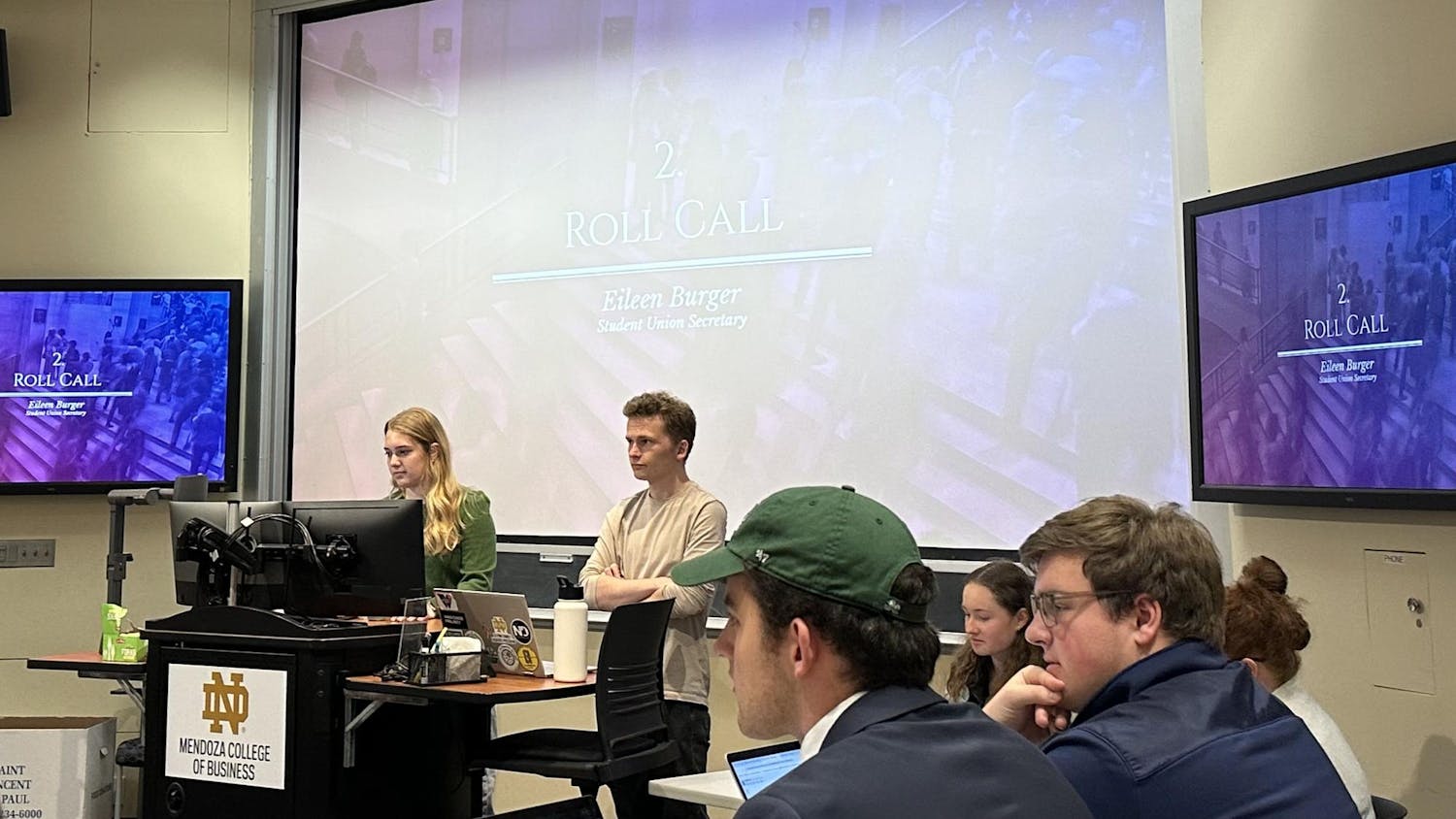Bettina Spencer, professor of psychology at Saint Mary's and senior psychology major Gina Stori presented research on Tuesday evening at Saint Mary's about female body image on the Saint Mary's and Notre Dame campuses.
The lecture, titled "Love your body? Body image at SMC compared to ND," occurred Tuesday evening in Vander Vennet Theatre in the Saint Mary's Student Center.

Stori and two other Saint Mary's students joined Spencer's research team, and the professor chose to focus the research on female body image.
The group distributed a survey to 175 female students from both Saint Mary's and Notre Dame. They gave participants several drawings of a female figure. They then asked participants to select the figure they believed to be most attractive to males, to females and to themselves. Additionally, the students were asked which image they felt closest resembled their own body and which image they most desired for their own body.
The team said the survey offered insight regarding the students' self-concept, social comparison and self-objectification.
Before conducting the research, the group formed several hypotheses. They predicted the students at the single-sex school would endorse a thinner body ideal, report more trait objectification and show higher levels of social comparison.
The research statistics showed that although Saint Mary's and Notre Dame female first-year students enter with the same ideal body image, senior students at the two schools show different results after four years in college.
While the study showed no significant difference in self-objectification and social comparison among females at the two schools, the researchers were shocked by the body image development at the two campuses.

Spencer said seniors at Notre Dame showed a thinner ideal body image than students at Saint Mary's.
"These diverging statistics show that Saint Mary's students are endorsing healthier body ideals by their senior year, and Notre Dame female students are endorsing a thinner and thinner body ideal by their senior year," Spencer said.
The research team said several possible factors could cause the dissimilar development at the two schools. These factors included exposure to counterstereotypic role models, the number of students taking Women's Studies courses and the presence of males on campus, Spencer said.
Stori said the results have received strong reactions from students on both campuses.
"This should be a big red flag," Stori said. "It is terrible that women at a respected institution like Notre Dame are leaving feeling inadequate."
Spencer said she plans to expand her research to other schools, preferably other coeducational schools with single-sex sister schools, to see if other campuses show similar results.
Stori said she plans to stay on board and assist Spencer in the additional research on the pressing topic.
"Further research will enable us to pinpoint what is driving the students' feeling of body image insufficiency," Stori said. "I hope that both male and female students are taking these results as seriously as they should."












